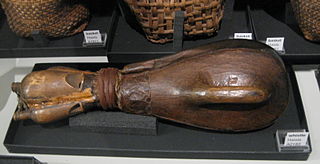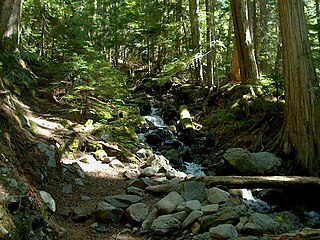
The Haisla are now an amalgamation of 2 bands, the Kitamaat people of upper Douglas Channel and Devastation Channel and the Kitlope People of upper Princess Royal Channel and Gardner Canal in BC. The Kitamaat call themselves Haisla ; and the Kitlope Henaaksiala, a reference to their traditional longevity. "The word 'Kitamaat' comes from the Tsimshian people, who originate from the Prince Rupert and Metlakatla areas. While 'Kitamaat' means ‘people of the snow’ in Tsimshian, Kit means people and Amaat refers to territory or place. The name Kitamaat became misrepresented in 1955 when Alcan Industries entered to build an alumanum smelter in their territory. Alcan attempted bring a new face to the territory and called it the "town of the future" and changed the spelling to Kitamat. The Haisla name for Kitamaat Village is 'Tsee-Motsa', meaning 'Snag Beach". The Haisla are a group indigenous people that have been living at Kitamat in the North Coast region of British Columbia and have been occupying these lands for at least the last 9000 years. Today, the Haisla people are located on the Kitamaat Village or othewise known as Kitamat Village. Home to about half of the 17000 Haisla, the Kitamaat Village sits at the head of the Douglas Channed in British Columbia, while most of the balance of people live elsewhere in the Greater Vancouver region. Their indigenous language is named after them in most English usage, though its actual name is X̄a’islak̓ala. The name Haisla is derived from the Haisla word x̣àʼisla or x̣àʼisəla(those) living at the rivermouth, living downriver'. Along with the neighbouring Wuikinuxv and Heiltsuk people, they were incorrectly known in the past as the Northern Kwakiutl.
The Haisla language, X̄a’islak̓ala or X̌àh̓isl̩ak̓ala, is a First Nations language spoken by the Haisla people of the North Coast region of the Canadian province of British Columbia, who are based in the village of Kitaamat 10 km from the town of Kitimat at the head of the Douglas Channel, a 120 km fjord that serves as a waterway for the Haisla as well as for the aluminum smelter and accompanying port of the town of Kitimat. The Haisla and their language, along with that of the neighbouring Heiltsuk and Wuikinuxv peoples, were in the past incorrectly called "Northern Kwakiutl".
Kitlope is a Tsimshian word meaning "people of the rocks" or "people from the opening in the mountains", a reference to a subgroup of the Haisla peoples. history shows that this village at one time was Kitselas Territory until the Haisla arrived. The Gitlope people forced into Haisla Territory were Hislaized. meaning to adopt the ways of the Haisla Peoples. It may refer to:

Douglas Channel is one of the principal inlets of the British Columbia Coast. Its official length from the head of Kitimat Arm, where the aluminum smelter town of Kitimat to Wright Sound, on the Inside Passage ferry route, is 90 km (56 mi). The actual length of the fjord's waterway includes waters between there and the open waters of the Hecate Strait outside the coastal archipelago, comprising another 60 km (37 mi) for 140 km (87 mi) in total.

The Gardner Canal is one of the principal inlets of the British Columbia Coast. Technically a side-inlet of the larger Douglas Channel, the Gardner Canal is still 90 km (56 mi) in length in its own right; total length of the waterways converging on the Douglas Channel is 320 km (200 mi) making it one of the largest fjord-complexes in the world. The entrance to the Gardner Canal is hidden behind Hawkesbury Island, and is accessed via Devastation Sound or Varney Passage which form the northeast and southeast flanks of that island. It was named in 1793 by George Vancouver in honour of his friend and former commander, Alan Gardner, 1st Baron Gardner. One of his men, Joseph Whidbey, first charted it the same year.

British Columbia mainland coastal forests is a temperate coniferous forest ecoregion the Pacific coast of North America, as defined by the World Wildlife Fund (WWF) categorization system.
Randy Stoltmann was an outdoorsman, and a campaigner for the preservation of wilderness areas in British Columbia, Canada.
The Haisla Nation is the band government of the Haisla people in the North Coast region of the Canadian province of British Columbia, centered on the reserve community of Kitamaat Village, which is near the similarly named town of Kitimat. The traditional territory of the Haisla Nation is situated along the Douglas Channel Region of Kitimat on British Columbia’s north coast, and includes the Kitlope Valley which is rich in natural resources, especially salmon.
Ecotrust is a nonprofit organization based in Portland, Oregon working to create social, economic, and environmental benefit.

The Kitlope River is a river in the Kitimat Ranges in the North Coast of British Columbia, Canada, flowing north into the head of the Gardner Canal to the south of the smelter town of Kitimat. It is named for the Gitlope group of Haisla, now part of the Haisla Nation government and community at Kitamaat Village near Kitimat. The name is a Tsimshian language reference to the people, who call themselves Henaksiala, and means "people of the rocks" or "people of the opening in the mountains". The Haisla language name for the river is Xesduwaxwsdu.
Kitlope 16, properly the Kitlope Indian Reserve No. 16, is an Indian Reserve on the North Coast of British Columbia, to the south of Kitimat, British Columbia and at the mouth of the Kitlope River, which flows north into the head of the Gardner Canal to the south of that town. It is the home reserve of the Henaksiala or Kitlope or Gitlope group of the Haisla, who are now part of the Haisla Nation government and settled with the Haisla at Kitamaat Village, the reserve community near Kitimat.

Chatsquot Mountain, 2365 m, is a high-prominence summit in the Kitimat Ranges of the Coast Mountains in British Columbia, Canada, located northwest of Kimsquit Lake, east of the lower Kitlope River, and at the upper end of the basin of the Kimsquit River. It is part of the Kitimat Ranges which in turn form part of the Coast Mountains. With a topographic prominence of 1,981 m (6,499 ft), it is one of Canada's Ultra peaks and is the 98th most prominent summits of North America. It is also one of the most isolated mountain peaks of Canada.
Mount Blane is a mountain in western British Columbia, Canada, located east of Kitlope Lake and southeast of the head of Whidbey Reach. It lies in the Kitlope Range, a subrange of the Kitimat Ranges which in turn form part of the Coast Mountains.

The Kitlope Heritage Conservancy or Huchsduwachsdu Nuyem Jees in the Haisla language, is a provincial park located on the Pacific coast of the province of British Columbia, Canada. It preserves the largest continuous tract of coastal temperate rainforest in the world. Beginning at the head of Gardner Canal, the park stretches inland along the Kitlope River to the border of Tweedsmuir Provincial Park.
The Tezwa River is a river in the Kitimat Ranges of the Coast Mountains in British Columbia, Canada. It is part of the Kitlope River drainage, feeding that river via the head of Kitlope Lake.
The Kapella River is a river in the Kitimat Ranges of the Coast Mountains in British Columbia, Canada. It rises west of Cornice Peak and flows northwest to join the Kitlope River.
Cornice Peak, 2093 m, is a mountain in the Kitimat Ranges of the Coast Mountains in British Columbia, Canada. It is located on the west side of the Kimsquit River just northwest of the head of Dean Channel. The Kapella River, a tributary of the Kitlope, rises on the west side of Cornice Peak.
The Tsaytis River is a river in the Kitimat Ranges of British Columbia, Canada, flowing southwest from its sources in those mountains into the North Coast of that province at the head of the Gardner Canal, adjacent to the mouth of the Kitlope River.

The Gamsby River is a river in the Kitimat Ranges of the North Coast region of British Columbia, Canada. It flows southwest to meet the Kitlope River, of which it is a tributary.










